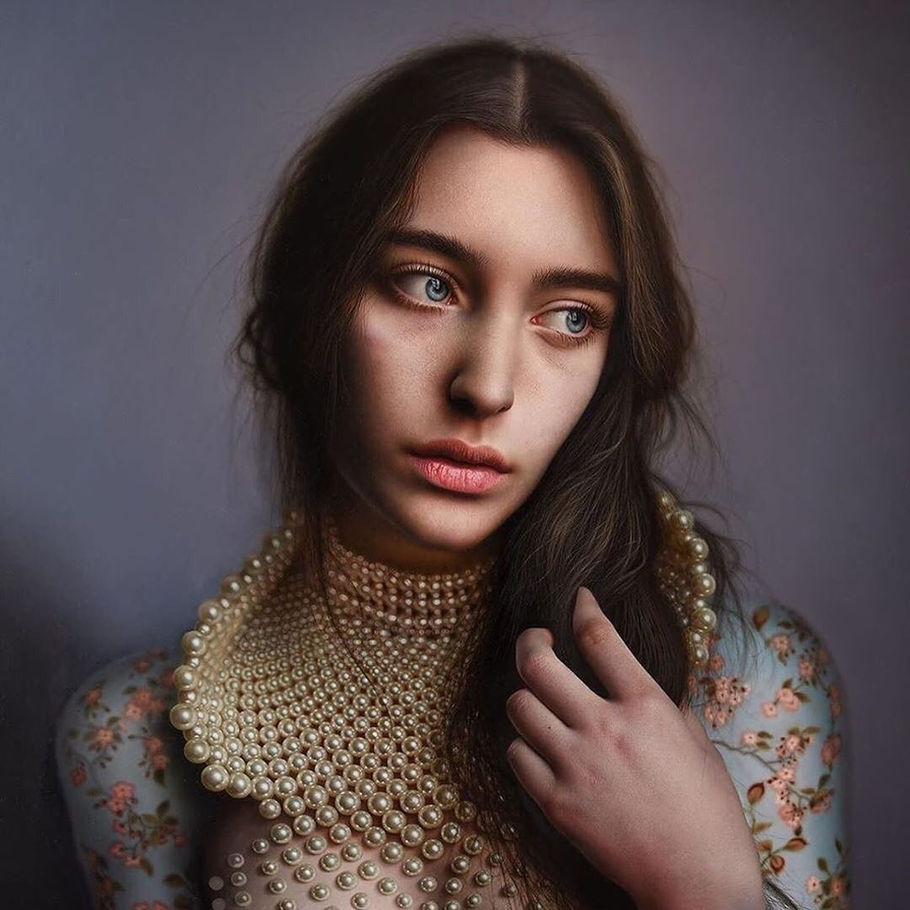Marco Grassi
Marco Grassi is an Italian artist born in Reggio Emilia in 1987 who instead of dedicating himself to the boring world of accounting, has decided to dedicate his life to his great passion for drawing. After graduating in accounting, he enrolled at the Academy of Fine Arts in Bologna. As he himself tells:
“I attended a course of pictorial restoration that allowed me to get in touch with the reality of ancient art. This made me decide what I wanted to do for the rest of my life. “
Equipped with incredible technical precision and great talent in the expressive rendition of his characters, Marco manages to bring out the most hidden emotions in a completely natural way. Each work requires two or three months of work and finishing, but what makes these paintings different from a photographer?
The surrealist element given by the textures with floral motifs and the skin that turns into porcelain brings to light the fragility of the human being:
“It’s not about tattoos, they are metamorphoses, contaminations of the body and the soul of the subject.”
Painting manages to make what is the contrast between the inner world and the surface, aesthetically beautiful but at the same time aseptic. Surreal hyperrealism becomes a good compromise to represent the middle ground between the two parallel universes.
Text © Collater.al
Marco Grassi est un artiste italien né à Reggio Emilia en 1987 qui, au lieu de se consacrer au monde ennuyeux de la comptabilité, a décidé de consacrer sa vie à sa grande passion pour le dessin. Après avoir obtenu son diplôme en comptabilité, il s'est inscrit à l'Académie des Beaux-Arts de Bologne. Comme il le raconte lui-même :
"J'ai suivi un cours de restauration picturale qui m'a permis d'entrer en contact avec la réalité de l'art ancien. Cela m'a permis de décider ce que je voulais faire pour le reste de ma vie. “
Doté d'une précision technique incroyable et d'un grand talent dans l'interprétation expressive de ses personnages, Marco parvient à faire ressortir les émotions les plus cachées de façon tout à fait naturelle. Chaque œuvre nécessite deux ou trois mois de travail et de finition, mais en quoi ces tableaux sont-ils différents de ceux d'un photographe ?
L'élément surréaliste donné par les textures aux motifs floraux et la peau qui se transforme en porcelaine met en évidence la fragilité de l'être humain :
"Il ne s'agit pas de tatouages, ce sont des métamorphoses, des contaminations du corps et de l'âme du sujet".
La peinture parvient à rendre ce qui est le contraste entre le monde intérieur et la surface, esthétiquement beau mais en même temps aseptisé. L'hyperréalisme surréaliste devient un bon compromis pour représenter le juste milieu entre les deux univers parallèles.
To know more:



